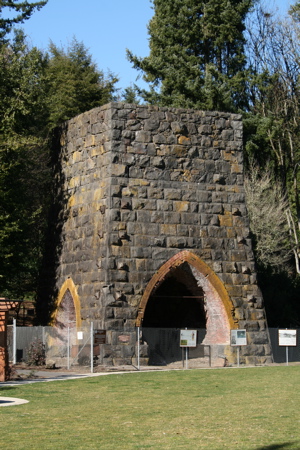 The Clackamas Indians originally inhabited the area now known as Lake Oswego. The Indians called the lake Waluga, meaning wild swan.
The Clackamas Indians originally inhabited the area now known as Lake Oswego. The Indians called the lake Waluga, meaning wild swan.
Lake Oswego is only about 15 miles North of Abernathy Green, the historic end of The Oregon Trail. Being so close to the destination of those traveling West, the earliest settlers brought a scattering of homesteads and farms.
The town of Oswego was founded in 1847 by Albert Durham who named it after his hometown of Oswego, New York. In the early days of the town the lake was known as Sucker Lake and the creek from the Tualatin River that fed into the lake was known as Sucker Creek. Albert Durham built a sawmill along Sucker Creek.
Waterways were the main means of transportation and commerce and Lake Oswego was very much a part of that. Goods could be transported down Sucker Creek, across the lake, and down to the Willamette River. This allowed river traffic to circumvent the falls along the Willamette River that are next to Oregon City. Today you can see evidence of this river traffic in the ferry crossings and ferry launches. One of the old ferry launches is still visible in downtown Lake Oswego at George Rogers Park, and there is still an active ferry crossing South of Lake Oswego between West Linn and Canby.
The first blast furnace on the West coast for the smelting of iron ore was built in Lake Oswego in 1865. At the time, the early industrialists hoped to turn Lake Oswego into “The Pittsburg of the West”. This may very well have happened if not for the advent of railway.
The coming of reliable trains had two huge impacts on Lake Oswego. First, better quality and less expensive iron ore could be manufactured elsewhere and quickly transported where needed, which pretty much doomed the iron ore industry in Lake Oswego. And second, the railroad made travel between Portland and Oswego easy and affordable. At the height of the rail service between Portland and Lake Oswego, in 1920, there were 64 trains daily. This same rail line is still in use today and known as the Willamette Shore Trolley. It remains a lovely way to see the river and enjoy a leisurely ride into Portland.
With transportation convenient between Lake Oswego and Portland, the town of Oswego blossomed. The lake drew people down for the weekend. To this day you will see a mix of small cottages that were built in the 1920’s and likely used as summer recreation homes for people who lived in Portland. Again, as transportation continued to improve with good roads and the ownership of cars, people were able to not just vacation in Lake Oswego, but also to live in Oswego and work in Portland.
The “City of Oswego” became the “City of Lake Oswego” in 1960 when the city annexed the town to the West, Lake Grove. The two names were combined to create Lake Oswego. And for clarity, the city is “Lake Oswego” and the lake is “Oswego Lake”.
The draw that has always made people want to live here is the same now as it was when the city was founded in 1847. It is next to the Willamette River and has a huge lake in the middle. The scenery is gorgeous and opportunities for recreation are plentiful. The close proximity to a major city with a major port allows people who live here to be near good jobs. And the town has always been a well-loved and well-cared for by the community. New residents are nearly always overheard mentioning how wonderful it is to live in a community where people really care, and where participation in everything from schools to local government is so full and vibrant.

One Reply to “Lake Oswego: A History”
Comments are closed.